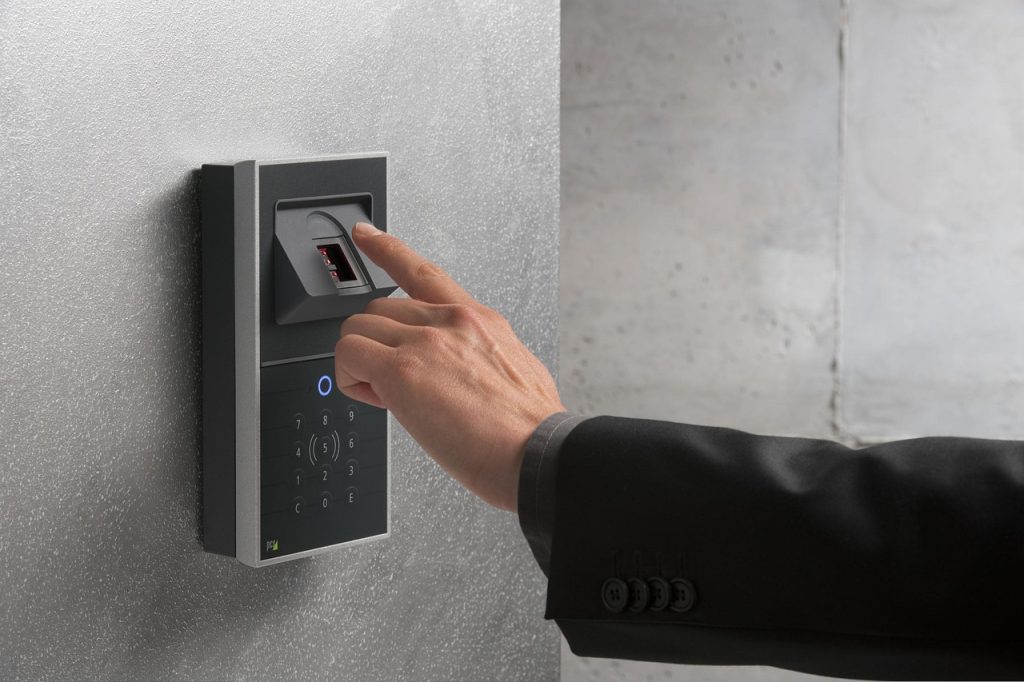From Keys and Cards to You
If you’ve worked in HR long enough, you’ve probably dealt with at least one security incident tied to a lost ID badge or unauthorized access. Maybe it was a contractor using someone else’s card, or an ex-employee whose access wasn’t revoked fast enough. These aren’t just compliance headaches—they’re real threats to people and data.
Biometric verification is changing that. And we’re not talking about basic fingerprint scans at office doors anymore. We’re looking at a shift toward continuous, invisible, and intelligent authentication that can fundamentally change how organizations protect their people, assets, and reputations.
The shift to next-gen biometrics—facial recognition, voice matching, iris scans, and behavioral profiling—presents a strategic opportunity. This blog explores why HR leaders need to start preparing for a future where identity verification is constant, seamless, and central to security.
The Big Picture: Biometrics Are No Longer Optional
Biometric systems are no longer “nice to have.” They are becoming critical infrastructure in organizations where security, compliance, and digital trust intersect. Here’s why:
- Credential-based access is vulnerable. Passwords are stolen. Badges are shared. Even multi-factor authentication can be bypassed with phishing or SIM swapping.
- Remote work has shifted risk boundaries. A dispersed workforce demands better assurance that the person logging in or entering a facility is who they say they are.
- Regulatory scrutiny is intensifying. In sectors like finance, healthcare, and critical infrastructure, identity assurance isn’t just about security—it’s a compliance necessity.
As biometric tech matures, it’s offering far more than identity proofing at onboarding. It now plays a role throughout the employee lifecycle—monitoring ongoing access, detecting anomalies, and streamlining secure workflows.
Emerging Technologies: What’s Moving the Needle
Let’s break down the core advancements:
1. Facial Recognition
Today’s facial recognition systems don’t just match photos—they map facial geometry with 3D depth, thermal imaging, and liveness detection to prevent spoofing with photos or deepfakes. Use cases include:
- Secure access to facilities or sensitive zones
- Time and attendance logging without touchpoints
- Identity validation in hybrid workplaces
2. Voice Biometrics
Voice is unique. Modern systems can analyze over 100 vocal characteristics—tone, pitch, cadence, and even emotional state. In high-trust environments, voice biometrics is being used for:
- Call center authentication
- Secure voice-driven system access
- Real-time fraud detection in customer support
3. Iris and Retinal Scans
These remain the gold standard for accuracy. Though higher in cost and infrastructure needs, they’re gaining traction in environments like defense, aviation, and high-security labs.
4. Behavioral Biometrics
Perhaps the most intriguing and quietly powerful category, behavioral biometrics track how a person types, moves a mouse, or walks. The advantage? These patterns are extremely hard to replicate and can provide passive, continuous authentication throughout the workday.
Imagine a system flagging an HRIS login because the typing speed or cursor behavior doesn’t match the employee’s usual pattern. That’s real-time risk mitigation.
Strategic Benefits for HR and Security Leaders
Why should HR leaders care? Because the benefits go far beyond security.
– Frictionless Employee Experience
Traditional authentication slows people down. Forgotten passwords, badge replacements, help desk tickets—these are productivity leaks. Biometrics offer fast, touchless access that respects user time and autonomy.
– Fewer Administrative Burdens
No more issuing or revoking physical tokens. No more shared logins. With biometric verification, identity follows the individual, not a device or badge.
– Improved Compliance and Audit Readiness
Biometric systems offer robust, tamper-resistant logs that help meet regulatory requirements around access control, data protection, and insider threat monitoring.
– Stronger Defense Against Insider Threats
With continuous behavioral verification, organizations can flag when someone’s account is being misused—even if the credentials are correct. That’s a critical upgrade in environments where insider threats are difficult to detect.
Implementation Considerations: It’s Not Just Plug-and-Play
While the tech is exciting, rolling out biometric systems comes with real-world complexity. Here’s what HR and IT need to plan for:
1. Employee Consent and Communication
Biometrics touch on personal privacy. Transparency about how data is collected, stored, and used is critical. Clear policies, opt-in models, and ongoing education will build trust.
2. Integration with Existing Systems
A strong biometric system should plug into access control, HRIS, ATS, and compliance tools without heavy friction. Look for vendors with open APIs and proven enterprise integrations.
3. Data Security and Retention Policies
Biometric data is sensitive. Your storage and encryption protocols must meet or exceed global data protection standards (think GDPR, India’s DPDP Bill, etc.). Biometric templates should never be stored in plain form.
4. Bias and Accuracy Risks
Facial recognition and voice biometrics have historically struggled with accuracy across gender, age, and racial groups. Vendors must demonstrate that their systems are trained on diverse datasets and tested for equitable performance.
5. Failover and Redundancy
What happens if a face scan fails? Or if someone injures a hand? Always provide fallback methods for authentication. A good strategy is layered verification—blending biometrics with traditional factors, not replacing them outright.
Where HR Can Lead the Way
HR is in a unique position to shape the future of biometric adoption inside organizations. Here’s how:
- Champion privacy-by-design in system selection and policy drafting.
- Collaborate with cybersecurity teams to align biometric usage with insider risk frameworks.
- Ensure inclusion and accessibility for employees with disabilities or cultural objections to certain modalities.
- Evaluate vendors rigorously—not just on price or features, but on their stance toward ethical data use and long-term support.
Action Steps for HR Leaders Ready to Explore Biometrics
If you’re just beginning this journey, here’s how to get started:
- Conduct an access audit. Identify which areas of your organization could benefit most from biometric authentication.
- Map the employee journey. Consider where identity verification is needed—and where it’s getting in the way.
- Engage legal and compliance early. Work together to define acceptable use and data governance.
- Pilot with purpose. Start with a small group or single use case (e.g. visitor access, remote login) and scale based on learnings.
- Monitor and adapt. Use performance data and employee feedback to refine policies and tech usage.
Conclusion: The New Standard of Trust Is Biometric
As workforces become more distributed, regulatory scrutiny intensifies, and digital risk grows more complex, static identity models just won’t cut it anymore.
Biometric verification isn’t a trend. It’s the future standard for workforce identity. And done right, it delivers what every HR leader wants: better security, less friction, and greater confidence in who has access to what.
This is the time for HR to shape that future—not wait for it. By leading the charge on biometric strategy, HR teams can redefine what workplace security looks like in the next decade.
















